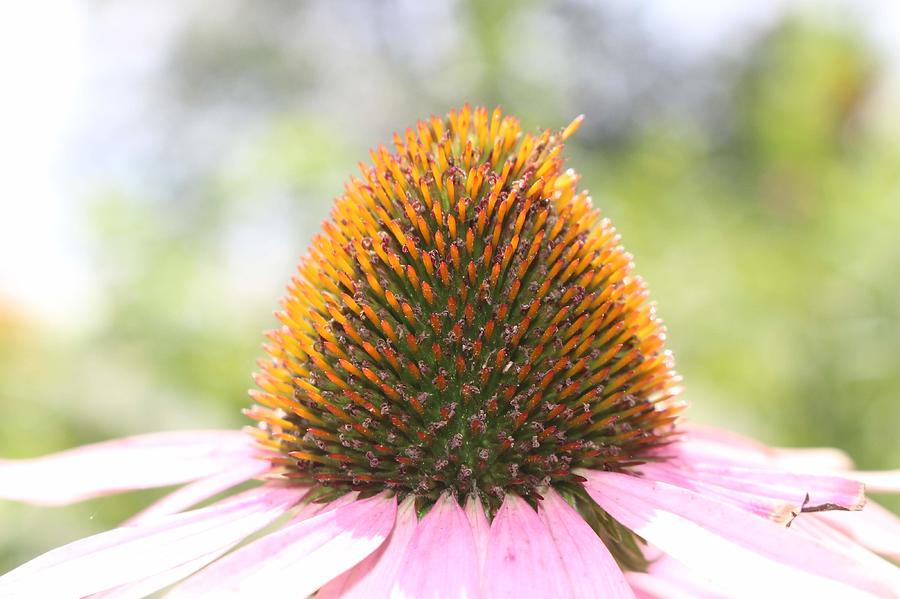

Not fussy about pH.īloom Form: 6” daisy-like flowers with a center cone.įoliage: Dark green lance shaped leaves with stiff hairs, 3-8 inch long leaves. Soil Requirements: Prefers deeply cultivated, organic, well drained soil. Water Requirements: Low water requirements after established, do not overwater.
DEADHEADING PURPLE CONEFLOWER FULL
Sun/Shad e Requirem ents: Full sun to light shade If you prefer to attract birds, leave the spent blooms to produce seed, which also creates winter interest in your garden. purpurea blooms for arrangements and deadheading will encourage reblooming and help prevent self seeding. Long sturdy stems make them perfect for cut flowers, remaining fresh in the vase for a long time. Foliage remains fresh through the growing season and are strong and sturdy, holding up well in windy sites. Petals curve downward more than the cultivated varieties. Amending your soil will improve garden performance. It tolerates poor and dry soils but still produces blooms prolifically. The petals droop downward as the bloom matures, and the center develops a distinct cone shape. In the wild, they can live as long as 40 years, in your garden you may want to divide every few to several years to maintain vigor. This is the species plant, not a cultivar, so it retains all the tough and hardy qualities of the native prairie perennial. Once considered a wildflower or native “weed” Echinacea purpurea is now a garden favorite. Deer resistant, but rabbits enjoy the foliage. Divide in spring or fall every 3 or 4 years to prevent crowding. Maintenance: Stems are strong and do not require staking. May be susceptible to leaf spot and Japanese beetles, neither will seriously damage the plant long term.įertilize: Apply a slow release 12-6-6 fertilizer in early spring before the leaves emerge. Pest and Disease Resistance: Not typically bothered by pests and disease. Growth Habit: Upright slowly spreading clumps.īloom Color: Rose pink with a copper-brown centerīloom Form: 2-4’ daisy-like flowers with a center cone.įoliage: Dark green 4-8” lance shaped leaves, becoming smaller toward the top of the stem. Water Requirements: Low to medium water requirements, about 1-2” per week, do not overwater. Echinacea do not require much in the way of fertilizer, apply a slow release balanced fertilizer in early spring if your soil is exceptionally poor. They are very tolerant of extreme temperatures and humidity, but are not salt tolerant. The hybrids often are sterile or self seed less, and the flowers retain their bright color longer. The hybrids that have been developed since 1997 are even more robust and longer living than the species plant and its cultivars. Echinacea are very drought tolerant and long living, as well as long blooming, from spring until fall. The central cone is generally purple to brown in color. Tall stems bear single blooms that are usually pink to purple, but there are a few white and yellow. purpurea The petals form a cone shape with the outer ray pointing downward and the center forming the cone. Echinacea purpurea, Purple Coneflower, is the most common species used in gardens with many varieties available, as well as hybrids generally crossed with E. They are a common prairie flower, but those with the showiest flowers are garden cultivars. Coneflowers are prolific bloomers all season long.Įchinacea, a member of the daisy family, has nine different species commonly called Coneflowers. They make excellent cut and dried flowers, and attract butterflies.

They are heat and drought tolerant, tolerant of poor soil, and are not generally bothered by pests and disease. Purple Coneflowers are one of the easiest perennials to grow and care for. Echinacea Purple Coneflowers are the easiest perennial and bloom all summer


 0 kommentar(er)
0 kommentar(er)
